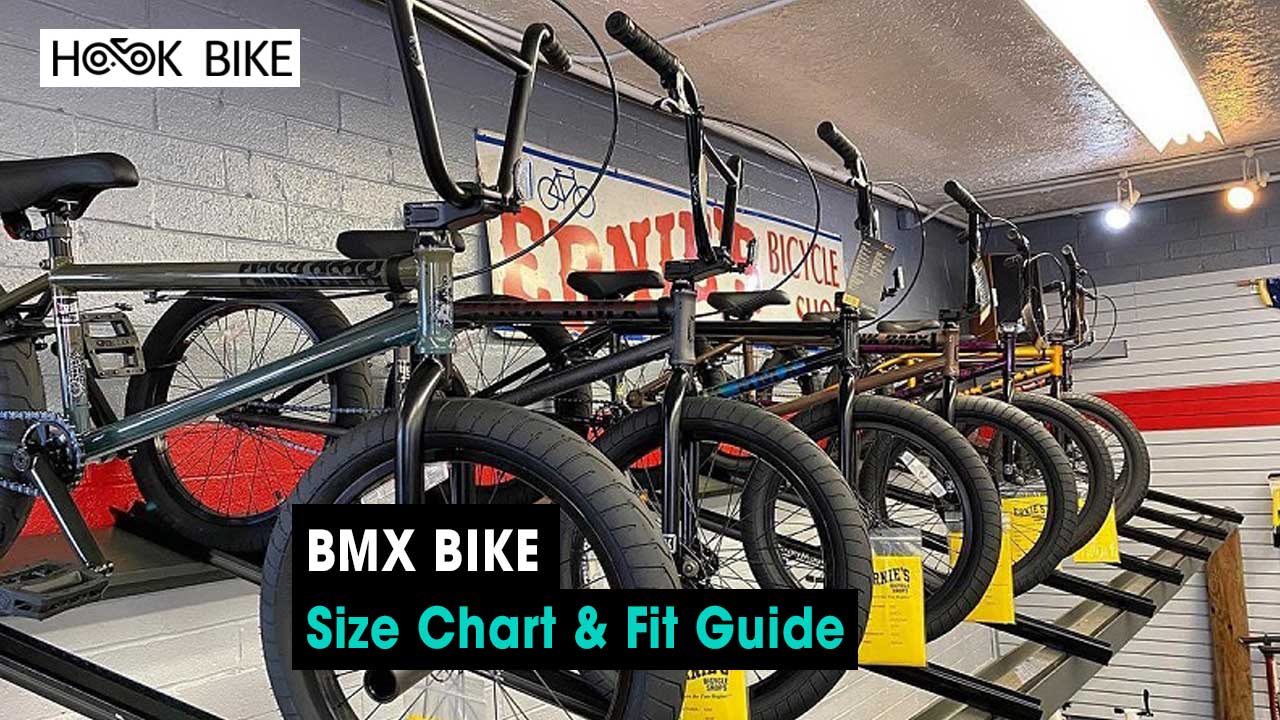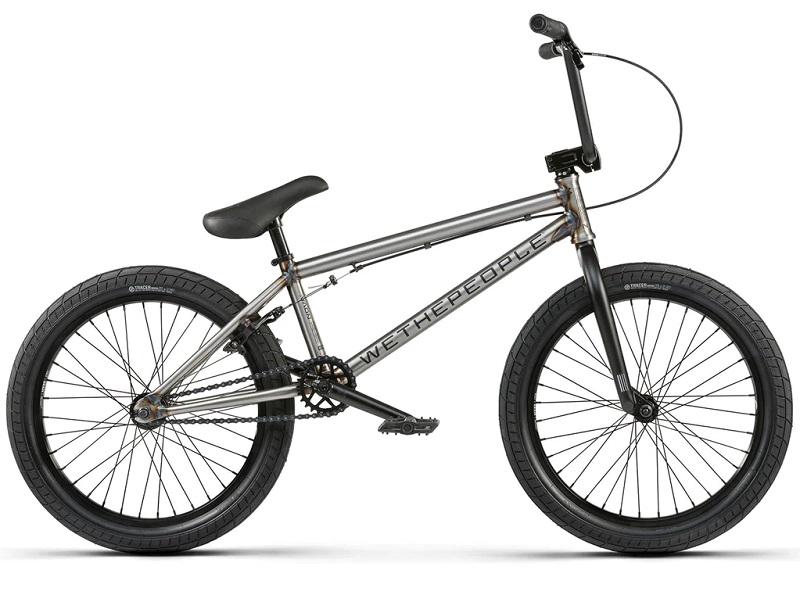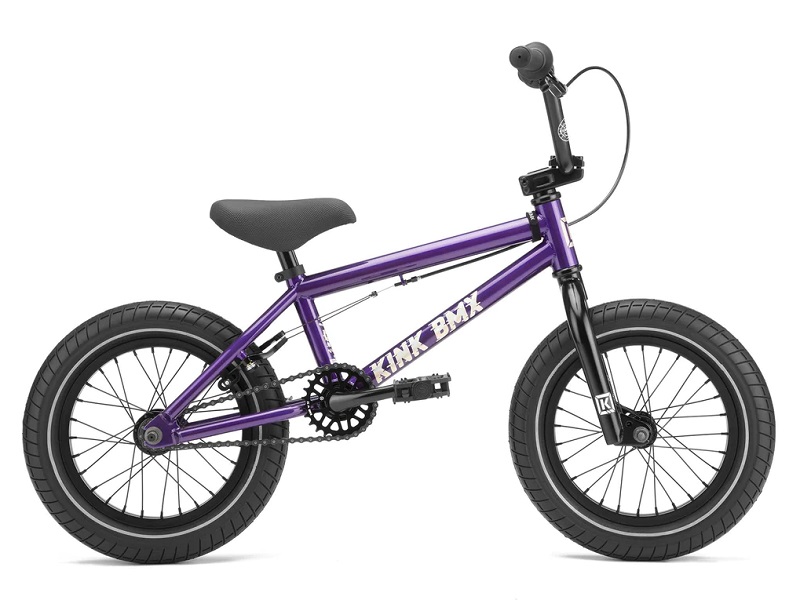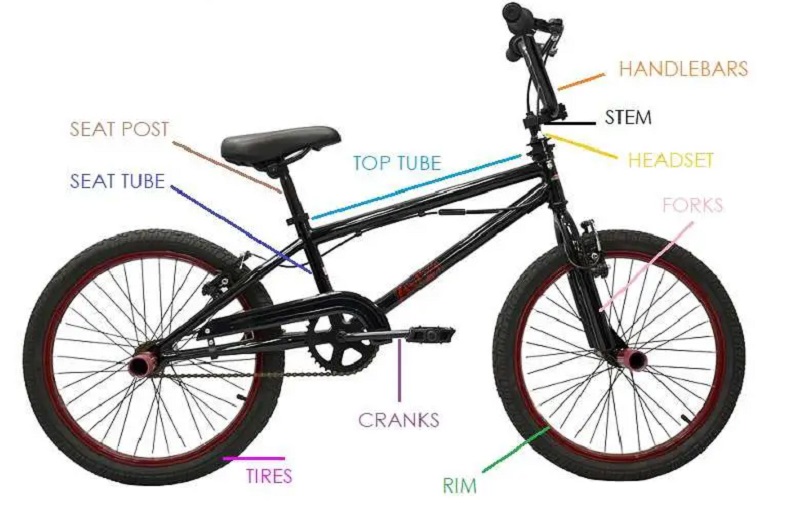Guidance
BMX Bike Sizing Chart & Fit Guide
When it comes to mastering the art of BMX biking, one of the most critical aspects you must nail down is finding the perfect BMX bike size and fit. HookBike’s understand that you’re not just looking for any guide; you’re seeking the ultimate resource that will help you choose the right BMX Bike Sizing Chart and configuration tailored to your unique needs and preferences.
In this comprehensive guide, we delve deep into the world of BMX bike sizing, covering everything from the fundamentals to the intricate details. Whether you’re a seasoned rider looking to upgrade your BMX bike or a beginner ready to take the first pedal stroke, this guide will equip you with the knowledge you need to make an informed decision and optimize your riding experience.
Understanding the Importance of BMX Bike Sizing
The importance of choosing the right BMX bike size cannot be overstated. A properly sized BMX bike not only enhances your comfort but also plays a pivotal role in your safety and performance on the track or in the park. Riding a BMX bike that doesn’t fit you well can lead to discomfort, decreased control, and even accidents. Here’s a closer look at why sizing matters:
- Comfort: Riding a BMX bike that’s too small or too large for your body can quickly become uncomfortable, causing soreness and fatigue during extended rides or tricks.
- Control: The right size bike offers better control, allowing you to maneuver with precision, tackle obstacles, and land tricks confidently.
- Safety: Ill-fitting bikes increase the risk of injury, as you may struggle to maintain balance and control, especially during high-speed maneuvers.
Now that we’ve emphasized the importance of BMX bike sizing let’s dive into the nitty-gritty details to help you find the perfect fit.

BMX Bike Sizing Chart
Creating a BMX size chart can be helpful for riders to determine the right size of BMX bike based on their height. BMX bikes are typically measured in terms of top tube length, which is the horizontal tube running from the handlebars to the seat. Here’s a basic BMX size chart:
| Rider Height (in feet and inches) | Top Tube Length (in inches) |
| 4’0″ – 4’6″ | 15″ – 16″ |
| 4’6″ – 5’0″ | 16″ – 17.5″ |
| 5’0″ – 5’6″ | 17.5″ – 19.5″ |
| 5’6″ – 6’0″ | 19.5″ – 21″ |
| 6’0″ and taller | 21″ and above |
Please note that this is a general guideline, and individual preferences may vary. Riders with longer legs or arms may prefer a larger top tube for more space and comfort, while those looking for more agility may prefer a shorter top tube. Additionally, BMX bike geometry can vary between brands and models, so it’s essential to test ride and find the right fit for your riding style.
Always consult with a local bike shop or experienced BMX riders for personalized advice and to test out different sizes to find what works best for you. BMX bikes come in various styles like race, park, street, and dirt, each with its own ideal geometry, so your riding style and preferences should also influence your choice of BMX bike size.
See more: Bike Frame Parts

Factors Influencing BMX Bike Sizing
Finding the ideal BMX bike size involves considering various factors, each of which plays a crucial role in ensuring a comfortable and efficient ride. Here are the key elements to keep in mind:
- Rider Height: Your height is the primary factor when determining the right BMX bike size. Taller riders typically require larger frames, while shorter riders should opt for smaller ones.
- Top Tube Length: The top tube length affects your reach and how you control the bike. A longer top tube provides a more stretched-out position, while a shorter one offers a more upright stance.
- Frame Geometry: Different BMX frames come with varying geometries, influencing the bike’s stability and handling. Consider factors like head tube angle, seat tube angle, and chainstay length.
- Wheel Size: BMX bikes are available in various wheel sizes, including 20-inch, 24-inch, and 26-inch options. The wheel size you choose should align with your riding style and intended use.
- Riding Style: Are you into street riding, park riding, or dirt jumping? Your riding style will dictate the type of BMX bike and size that suits you best.

Finding Your Perfect BMX Bike Size
Now that you understand the factors at play, let’s walk you through the steps to find your perfect BMX bike size:
Step 1: Measure Your Height
Start by measuring your height accurately. Stand barefoot against a wall, ensuring your heels, back, and head touch the wall. Use a measuring tape to measure the distance from the floor to the top of your head. This measurement will be your rider height.
Step 2: Determine Your Frame Size
Based on your rider height, you can use the following general guidelines to find the suitable BMX frame size:
- Rider Height: Under 4’10” (147 cm) -> Frame Size: Micro Mini or Junior
- Rider Height: 4’10” to 5’4″ (147 cm to 163 cm) -> Frame Size: Mini or Expert
- Rider Height: 5’4″ to 5’10” (163 cm to 178 cm) -> Frame Size: Pro
- Rider Height: Over 5’10” (178 cm) -> Frame Size: Pro XL or XXL
Remember that these are just general guidelines, and individual preferences may vary. It’s crucial to test ride different BMX bikes and sizes to see which one feels the most comfortable and suits your riding style.
Step 3: Test Ride and Fine-Tune
Testing a few BMX bikes is a critical step in the sizing process. Visit your local bike shop or BMX park and try out bikes that align with your calculated frame size. Pay attention to how each bike feels in terms of comfort, control, and maneuverability.
Step 4: Consult with Experts
If you’re still unsure about the right size, don’t hesitate to consult with BMX experts or experienced riders. They can provide valuable insights and recommendations based on their own experiences.
See more: what are bike frame sizes?

BMX Bike Sizing Tips for Specific Riding Styles
Now that you have a general idea of how to determine your BMX bike size, let’s explore some additional tips tailored to specific riding styles:
Street Riding
For street riding, consider a shorter top tube for better maneuverability and control.
Opt for a sturdy frame that can withstand the rigors of urban riding and handle the occasional drops and stair sets.
Park Riding
Park riders often prefer a balanced BMX bike with a medium top tube length for versatility in tricks and transitions.
Lighter frames and components can make it easier to catch air and perform tricks in skate parks.
Dirt Jumping
Dirt jumpers typically lean towards BMX bikes with a longer top tube for added stability during take-offs and landings.
Strong, durable frames are essential for handling the rough landings and impacts associated with dirt jumping.
Racing
BMX racing bikes have their sizing standards, often based on wheel size and age categories. Consult with your local BMX racing association or track for guidance.
Final Thoughts
Finding the right BMX bike size is a crucial step in ensuring a safe, enjoyable, and high-performance riding experience. By considering your height, frame size, riding style, and testing out different options, you can confidently select the BMX bike that suits you best.
Remember that this guide serves as a comprehensive resource to empower you with the knowledge needed to make an informed decision. Your perfect BMX bike is out there, waiting to be discovered. So, gear up, hit the trails, and let your BMX adventures begin!

